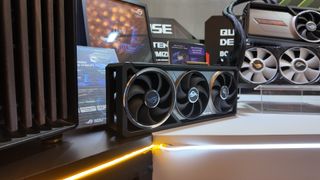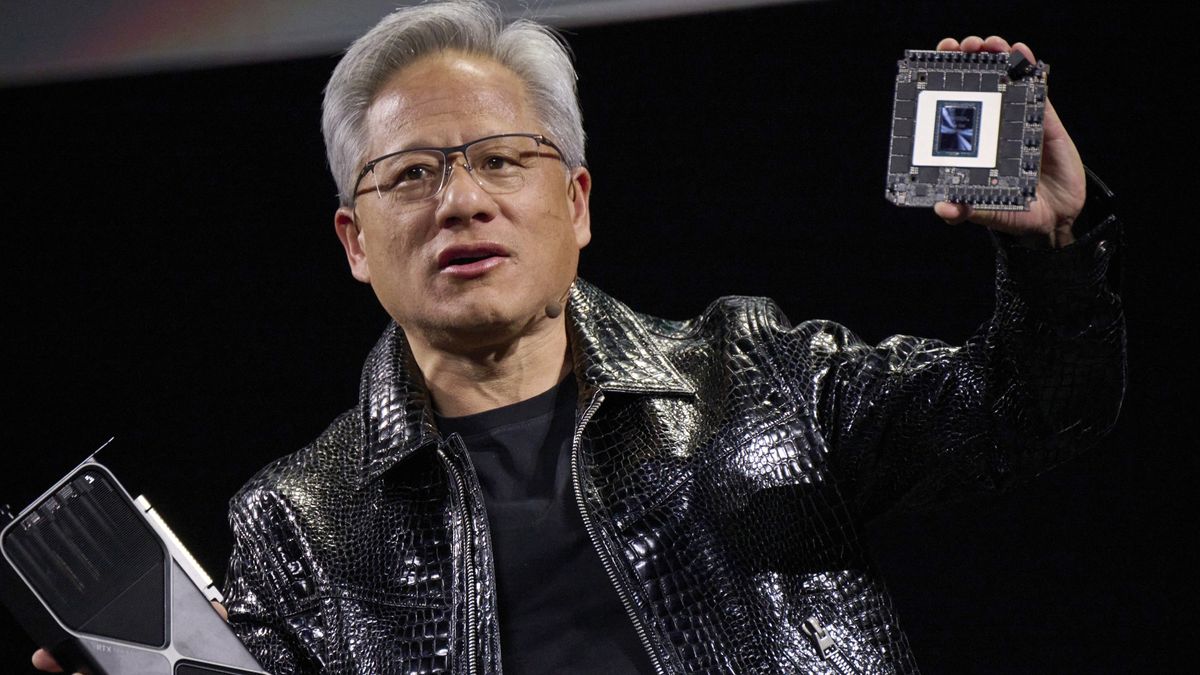By virtue of its relentless pursuit of ever faster, ever more powerful GPUs, Jen-Hsun Huang has claimed that Nvidia, over the past 20 years, has driven the "cost of computing down by one million times".
When you look at the rising costs of modern graphics cards compared with their forebears, that's maybe hard to fathom. It sure looks like the cost of a GPU has just been steadily rising to most of us when we look at the objects of our silicon desires. But when you look at just what the graphics chips of today are capable of, the level of raw computational power at the disposal of even a lowly RTX 4060 would have seemed borderline mythical 20 years back.
A GeForce 6800 Ultra from 2005 delivered a whopping 6.4 GFLOPS, while the bottom of the Ada Lovelace generation comes with 15,100 GFLOPS of processing grunt. That's a whole world of difference from a $499 card of 20 years ago versus a $299 GPU of today.
And that's not even a card anywhere near the top of the stack, nor close to what you'll get from Nvidia's most powerful enterprise GPUs.
Jen-Hsun, at today's morning-after-keynote Q&A session, compared what Nvidia has done in developing more powerful graphics silicon, pushing down the relative price of GPU computational power, to the impact of Moore's Law.
"The reason Moore's Law was so important in the history of the chip is that it drove down computing costs," Huang remarks. "In the course of the last 20 years we've driven the marginal cost of computing down by one million times.
"So much that machine learning became logical: 'just have the computer go figure it out.'"
Basically, there's so much computational power available for such relatively little cash that you might as well just start throwing it at AI to solve all our problems. Or, you know, draw us a picture of a gold fish when you absolutely, positively just have to have a freshly generated picture of a fish.
There's no getting away from it, the graphics card, and its constituent component, the GPU, have become the most important pieces of silicon in our modern time. There's also no getting away from the fact that Nvidia is responsible for some of the most important silicon of our time, however you feel about the rise and rise of artificial intelligence and its potential impact on the world and humanity.
Does Jen-Hsun's maths add up? I don't know, he didn't show his workings, but what is true is that since the birth of the GPU as we know it, the cost-to-performance ratio has only been going in one direction.

 23 hours ago
18
23 hours ago
18








![Anime Reborn Units Tier List [RELEASE] (November 2024)](https://www.destructoid.com/wp-content/uploads/2024/11/anime-reborn-units-tier-list.jpg)
